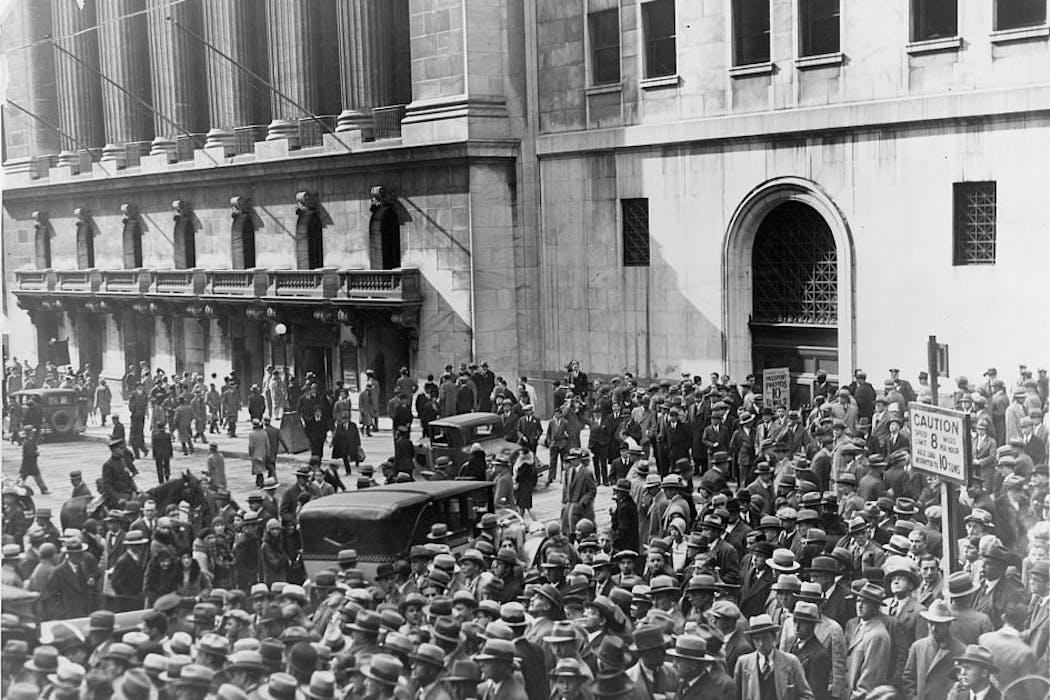Today’s AI hype has echoes of a devastating technology boom and bust 100 years ago
- Written by Cameron Shackell, Sessional Academic, School of Information Systems, Queensland University of Technology

The electrification boom[1] of the 1920s set the United States up for a century of industrial dominance and powered a global economic revolution.
But before electricity faded from a red-hot tech sector into invisible infrastructure[2], the world went through profound social change[3], a speculative bubble, a stock market crash[4], mass unemployment and a decade of global turmoil.
Understanding this history matters now. Artificial intelligence (AI) is a similar general purpose technology[5] and looks set to reshape every aspect of the economy[6]. But it’s already showing some of the hallmarks of electricity’s rise, peak and bust in the decade known as the Roaring Twenties[7].
The reckoning that followed could be about to repeat.
First came the electricity boom
A century ago, when people at the New York Stock Exchange talked about the latest “high tech” investments, they were talking about electricity.
Investors poured money into suppliers such as Electric Bond & Share[8] and Commonwealth Edison[9], as well as companies using electricity in new ways, such as General Electric (for appliances), AT&T (telecommunications) and RCA (radio).
It wasn’t a hard sell[10]. Electricity brought modern movies[11], new magazines[12] from faster printing presses, and evenings by the radio[13].
It was also an obvious economic game changer, promising automation, higher productivity, and a future full of leisure and consumption[14]. In 1920, even Soviet revolutionary leader Vladimir Lenin declared[15]: “Communism is Soviet power plus the electrification of the whole country.”
Today, a similar global urgency grips both communist and capitalist countries[16] about AI, not least because of military applications[17].
Then came the peak
Like AI stocks now, electricity stocks[18] “became favorites in the boom even though their fundamentals were difficult to assess”.
Market power was concentrated. Big players used complex holding structures to dodge rules and sell shares in basically the same companies to the public under different names.
US finance professor Harold Bierman[19], who argued that attempts to regulate overpriced utility stocks were a direct trigger for the crash[20], estimated that utilities made up 18% of the New York Stock Exchange in September 1929. Within electricity supply, 80% of the market[21] was owned by just a handful of holding firms.
But that’s just the utilities. As today with AI, there was a much larger ecosystem.
Almost every 1920s “megacap” (the largest companies at the time) owed something to electrification. General Motors, for example, had overtaken Ford[22] using new electric production techniques.
Essentially, electricity became the backdrop to the market in the same way AI is doing, as businesses work to become “AI-enabled[23]”.
No wonder that today tech giants[24] command over a third of the S&P 500 index and nearly three-quarters of the NASDAQ[25]. Transformative technology drives not only economic growth, but also extreme market concentration.
In 1929, to reflect the new sector’s importance, Dow Jones launched the last of its three great stock averages: the electricity-heavy Dow Jones Utilities Average[26].
But then came the bust
The Dow Jones Utilities Average went as high as 144[27] in 1929. But by 1934, it had collapsed to just 17[28].
No single cause[29] explains the New York Stock Exchange’s unprecedented “Great Crash”, which began on October 24 1929[30] and preceded the worldwide Great Depression.
That crash triggered a banking crisis, credit collapse, business failures, and a drastic fall in production. Unemployment soared[31] from just 3% to 25%[32] of US workers by 1933 and stayed in double figures until the US entered the second world war in 1941.







